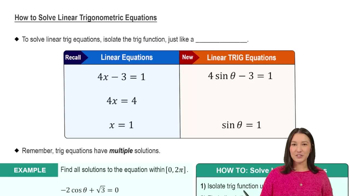Textbook Question
In Exercises 1–10, use substitution to determine whether the given x-value is a solution of the equation. __ √ 3 𝝅sin x = ------- , x = ------- 2 6
415
views
 Verified step by step guidance
Verified step by step guidance Verified video answer for a similar problem:
Verified video answer for a similar problem:



 4:25m
4:25mMaster Introduction to Trig Equations with a bite sized video explanation from Patrick
Start learning